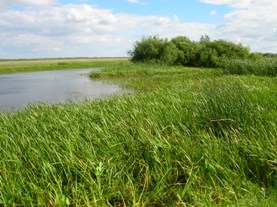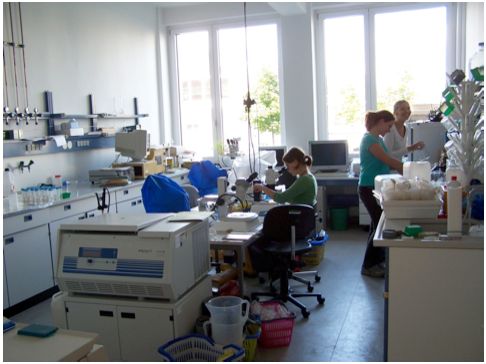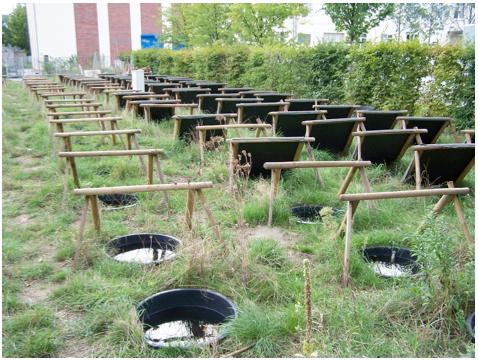About ECOLINK
Challenge
Worldwide basic environmental conditions are currently changing dramatically. These changes are resulting in a widespread increase of ecosystem exposure to toxicants due to: (i) alterations in land use owing to intensified agriculture and industry, (ii) great demand for energy supply based on fossil hydrocarbons and biomass, and (iii) climate change followed by a spread of disease vectors and related chemical control measures. To use chemicals safely, a key challenge is our ability to perform a reliable environmental risk assessment. This is the basis for an efficient sustainable landscape management accepted by the public.

State of the art
There is great uncertainty in predicting toxicant effects on complex ecological systems. Reasons are insufficient consideration of ecological processes like population regulation, competition, predator-prey relationships and re-colonisation. In addition, climate variability is not considered.
River close to Karasuk station (Siberia)
Aim
The “ECOLINK” project aims to increase realism of the predictive tools applied in risk assessment of environmental toxicants. This requires investigation of the fundamental ecological processes mentioned above and incorporation of the knowledge thus obtained into the risk- assessment procedures.
Overall importance
The agenda is based on scientists’ and public apprehension over the accelerated environmental change brought about by the evolving societal lifestyles (e.g. urbanisation, transportation, and generally increasing pressure on environmental resources and ecosystem services). These dynamics contribute to affecting the global environment through changes in the Earth’s climate system, resulting in rising temperatures with greater probability of adverse floods and droughts. In addition, global warming influences land use on a large scale and increases the occurrence of infectious disease vectors for humans, animals and plants. This in turn increases the quantity and diversity of pesticides, biocides, pharmaceutical, and other chemicals applied worldwide.

Laboratory at the UFZ (Germany)
